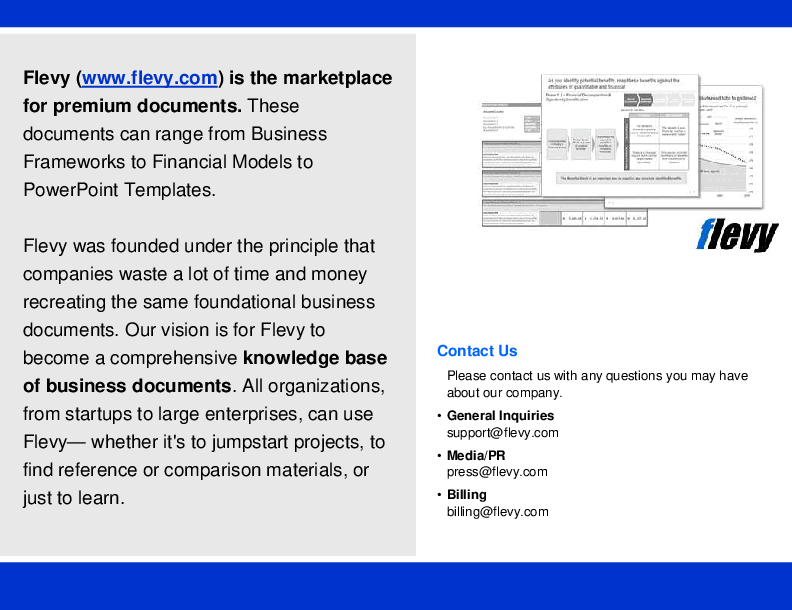Consumer Packaged Goods (CPG) Value Chain (PowerPoint PPTX Slide Deck)
PowerPoint (PPTX) 22 Slides
BENEFITS OF THIS POWERPOINT DOCUMENT
- Provides a framework for examining the Consumer Products Goods Industry.
- Identifies 20 important insights and considerations for CPG Value Chain Analysis.
- Provides a detailed breakdown of the impact of Digital Transformation across the CPG Value Chain.
VALUE CHAIN ANALYSIS PPT DESCRIPTION
An Industry Value Chain, based on Michael Porter's Value Chain, is a visual representation of the series of steps an organization in a specific industry takes to deliver a product or service to the market. It captures the main business functions and processes that are involved in delivering the end product or service, illustrating how each step adds value and contributes to competitive advantage. It often encompasses both primary and support activities.
Understanding Industry Value Chains enables organizations to improve Customer Satisfaction and Loyalty by ensuring that every component of the product or service delivery is tailored to meet or exceed customer expectations.
This PowerPoint presentation captures the Consumer Packaged Goods (CPG) Industry Value Chain, which includes the following primary and support activities:
Primary Activities
1. Raw Material Sourcing
2. Product Development
3. Manufacturing
4. Packaging
5. Distribution
6. Marketing & Sales
7. After-Sales Service & Support
Support Activities
1. Procurement
2. Technology Development
3. Human Resource Management
4. Firm Infrastructure
5. Finance & Accounting
6. Legal & Accounting
7. Supply Chain Management
8. Sustainability & Environmental Management
Each of these activities is critical to the smooth operation and success of a CPG company, and excellence in each area can lead to Competitive Advantages in a highly competitive market.
This PowerPoint presentation dives deeper into each of these activities, highlighting key elements. This presentation also discusses Consumer Packaged Goods Value Chain Analysis, highlighting a multitude of key considerations and potential insights to pay attention to. We further examine the significant impact of Digital Transformation and various specific emergent technologies on the CPG Industry.
The CPG Value Chain is critically dependent on Agile Supply Chain Management to rapidly adapt to changing consumer preferences and global market dynamics. Technological integration across the CPG Value Chain, from product development to after-sales service, is essential for operational efficiency and personalized customer engagement. Sustainability initiatives in the CPG Value Chain, particularly in sourcing and packaging, are increasingly influencing consumer choices and brand loyalty.
This presentation provides a comprehensive breakdown of the Consumer Packaged Goods Value Chain, detailing each primary and support activity essential for operational success. It emphasizes the importance of cross-functional collaboration and innovation, which are crucial for navigating the complexities of today’s fast-paced CPG marketplace.
Got a question about the product? Email us at support@flevy.com or ask the author directly by using the "Ask the Author a Question" form. If you cannot view the preview above this document description, go here to view the large preview instead.
Source: Best Practices in Value Chain Analysis, Consumer Packaged Goods PowerPoint Slides: Consumer Packaged Goods (CPG) Value Chain PowerPoint (PPTX) Presentation Slide Deck, LearnPPT Consulting
VALUE CHAIN ANALYSIS PPT SLIDES







